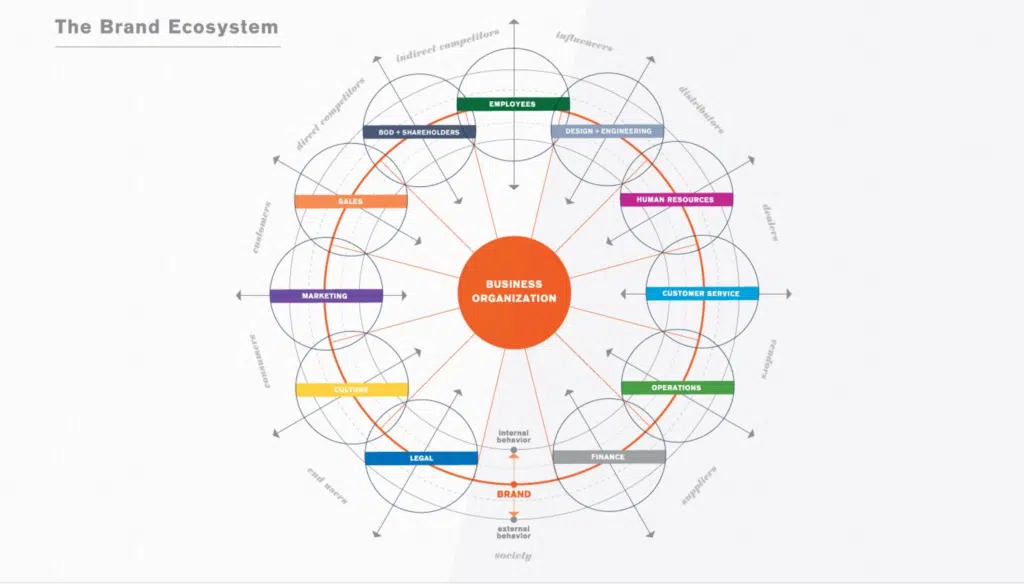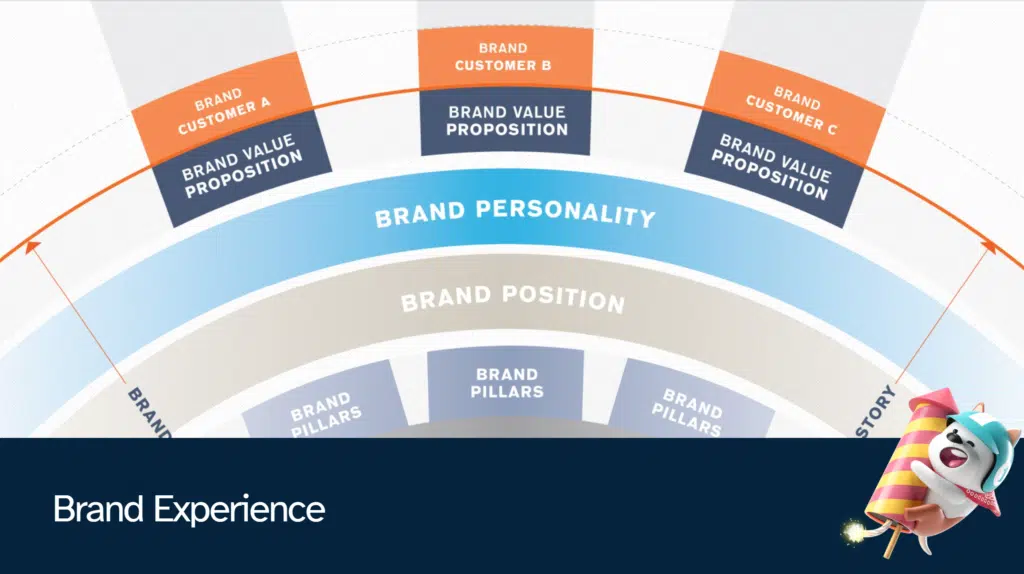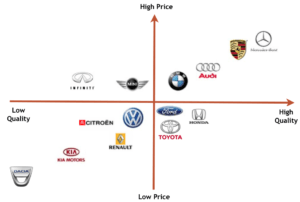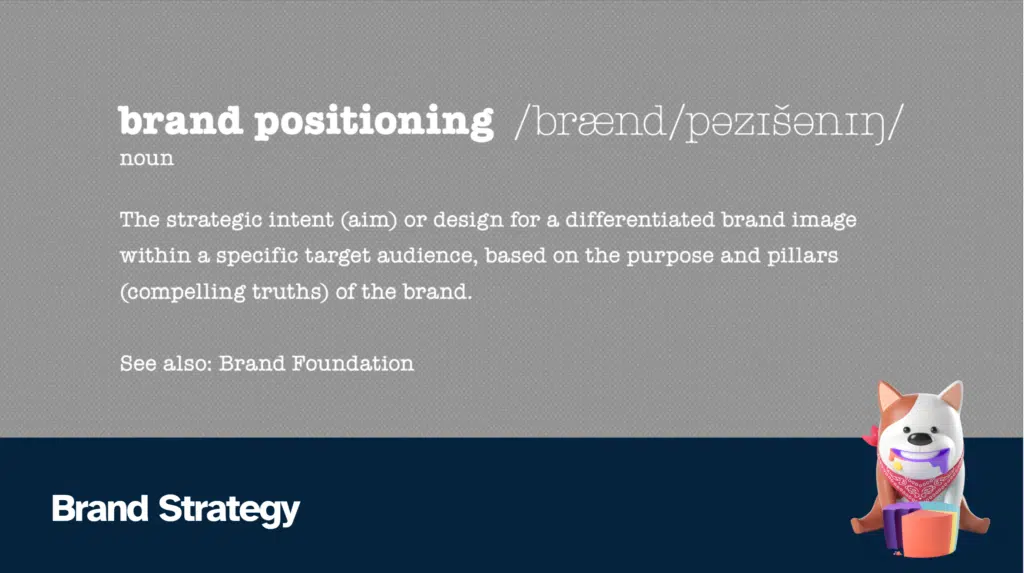
Today’s world is full of innovation, which is assisted by technology that other eras did not have. But even so, there is hardly any business idea that does not have competition.
Even if a new business model emerges, there will be other experts who will modify the idea and become competitors. So there really is no way to escape competitors, and it is not a bad thing.
In fact, if you know the value of what you offer and understand your target market. You can use market competition to your advantage. It all starts when you take steps that will put a unique image of your business into the minds of your target market. This is where brand positioning comes in.
What is brand positioning?
There are many formal definitions of brand positioning, but they all say the same things. And in simple terms, brand positioning refers to the space a business or an organisation owns in the mind of a customer or prospect.
For more clarity on brand positioning, just think of any brand, whether good or bad. It could be related to something you use every day, like a phone. If you are using an Apple device, it is because you see a lot of value in it. But just think of the brand right now. Where does your mind go when you come across “iPhone” or “iOS”?
Is it class? High-quality mirror selfies? Upgraded phone models that may even be unnecessary?
It is the image of the brand that the average person has because that is how the Apple company has made it.
In case you have not realised, those ideas are actually unique to the iPhone brand. But there are so many companies producing phones these days. But brand positioning, which has put unique ideas in the minds of people that use or want to use an iPhone, is the strategy that has set this product apart.
This encourages people to compare similar products before choosing which to buy.
With brand positioning, customers can form a connection with your product or service. Then choose it over similar ones because of that unique appeal. For this reason, you have to create a brand identity, as positioning goes far beyond mere advertising.
The importance of brand positioning

Since this business model has to do with designing your brand in a way that customers can recognize unique features and connect with them, it is safe to say that it also ensures continuity.
This is because the foundation through which a customer gets attracted to your business from the way you position your brand is a genuine one.
All the strategies used under brand positioning are meant to occupy a space in the customer’s head, one that is filled with an image that connects them to your brand. So, after their first experience with you, they will come back for more because that relationship is already there.
Even if there is tight competition in your industry, brand positioning ensures that your customers will stick with you. This is because the very nature of brand positioning uses your competitors to your own advantage.
Let us take two restaurants, for example.
The image a customer has of “restaurant A” will be different from what that same customer will have of “restaurant B”. While these two businesses, and even their products, may be similar, what will make a difference to the customer is the space they occupy in his mind.
That space, which contains a unique image of each of the two restaurants, is what ultimately helps a customer decide if they want to patronize restaurant A or B.
From the illustration above, whether you are A or B, the customer will choose you over your competition because they perceive you to be credible and more favourable with respect to their needs. This strong reason for choosing you is why they will keep coming back no matter what your competitors do.
So if you are building a business, don’t feel intimidated by the number of competitors you have in the industry. As long as you offer value to the consumers, use brand positioning to form a connection with them, and they will love you for your unique qualities.
Brand positioning strategies
In order to properly use brand positioning to boost your startup, you must use a strategy that concentrates on the uniqueness of your business. There are different ways to go about this, and you will find some of the most popular ones below.
Social media strategy
Anyone that uses a mobile phone is most likely on at least one social media platform. So you can be sure of reaching a large number of people with this strategy—especially the younger generation.
You don’t have to be on every single social media platform to achieve your aim. Just look for the one that has the type of people you want your business to reach.
Instagram is a great place to position yourself if your business needs a lot of visual representation. If the nature of your business involves appealing to other people’s intellect, Twitter would be perfect for you. If you want to connect with people that are down to earth, Facebook is the appropriate place to position yourself.
Discover the place on social media where your target market likes to spend their time and money, then build a presence there and communicate with people as much as you can.
Quality-based strategy
This strategy of brand positioning is mainly about selling the fact that you give your customers quality, and they love it despite the high cost of the product or service.
To use this strategy, your customers need to believe that there is something special about your product that makes it stand out, not only among competitors, but even among similar products from your own company.
Your target market will not be anyone that wants the product, but everyone that is willing to pay a higher amount of money for a product that makes them feel superior to other users of similar items.
Before using a quality-based strategy, have it in mind that people on a budget will not subscribe to your product. They will choose cheaper alternatives because they cannot afford higher quality — and this is where you should capitalise to grow your business.
Use higher quality materials during production, or sell out solutions that have unique perks linked to them. Study your competitors, find one or two weak points, then create a solution that will benefit customers in a luxurious way.
Don’t worry about the customers on a budget; they are not for you. VIP sections are very expensive in entertainment shows, but they are also always full. This means that people will pay for a class no matter the price, as long as they get the promised results.
Convenience-based strategy
The same way people pay for class and higher quality, they will also pay for convenience. And you can use this to your advantage by positioning your brand in such a way that customers associate your product or service with ease and comfort.
Look at your competitors in the industry and use them to your advantage. No matter how experienced or powerful other players in the industry may be, they can not be everywhere at the same time, so you can use your location as a selling point.
Ease of use is also another feature that all your competitors don’t have. Make your product easier to use for everyone you target as a customer, and they will naturally move towards you because of this convenience.
Other things like multiple platform support, wide accessibility, easy design, and assistive features are factors you should consider adding to your product so that they will pick you over others.
This brand positioning strategy mostly appeals to busy people. They don’t have much time to spare, so if you offer them a more convenient solution, they will pay more for it.
Price-based strategy
Convenience and quality-based strategies appeal to people who are willing to spend more money on something that makes their life easier. For those on a tight budget, this may appear to be a luxury that they cannot always afford. To attract this group of people, you must use a price-based strategy.
The people that can’t afford luxurious items will pay for the basics. As long as it gives them a similar benefit, they don’t really care for VIP status. Interestingly enough, this demographic makes up the larger part of the customer base. So if you can appeal to them, you will make a lot of sales.
When planning your business, design the entire process in such a way that you will not run at a loss if you reduce your price. Position yourself as the most affordable seller in the industry and people will abandon their brand for your own — especially if you offer the same quality as other expensive alternatives.
Differentiation strategy
This strategy relies on the uniqueness of a product for success. Once again, study your competitors and see what you can improve on to make yourself stand out in the market.
Even if your idea already exists in another brand or business, you can always make an improvement. This upgrade is what will make you shine, and people will patronise you for it.
There are many software applications right now, but new ones are also being designed every day. This is because developers are trying to break into the market with this differentiation strategy by doing something unique.
So bring your bright ideas to life and create a solution that is different from what people are used to.
Market position mapping

Your product’s price and quality will influence where customers place you. And even if people don’t say it, their purchasing behaviour is determined by market position mapping.
- A high price and low quality means you’ll have a low number of buyers.
- A low quality and a low price mean you’ll have more buyers.
- A high price and high quality means you will sell to many rich people.
- And high quality at a low price means you’ll run at a loss.
Global examples of strong brand positioning
Apple: They primarily employ a quality-based and differentiation strategy. Iphones, mackbooks, ipads, and many other Apple products are associated with uniqueness and luxury, so people always buy them no matter the cost.
Hubspot: They primarily use the convenience strategy. The platform is very easy to use, and their brand is built around the idea of providing helpful content that encourages traffic.
AliExpress: They chiefly use the price-based and convenience strategy. The items on this e-commerce website are relatively cheap, so customers on a budget can comfortably afford to buy alternatives to what richer people are using.
National examples of brands we have build
Brands we have worked with
Conclusion
Keep in mind that you don’t need to put your competitors in a bad light for any of these brand positioning strategies to work — that would be unethical.
Just study your competitors and harness whatever is useful to you. Customers will naturally move towards what they need, so if you position yourself in the right way, people will find you and stay loyal to your brand.





